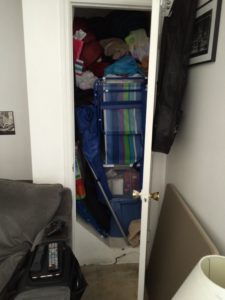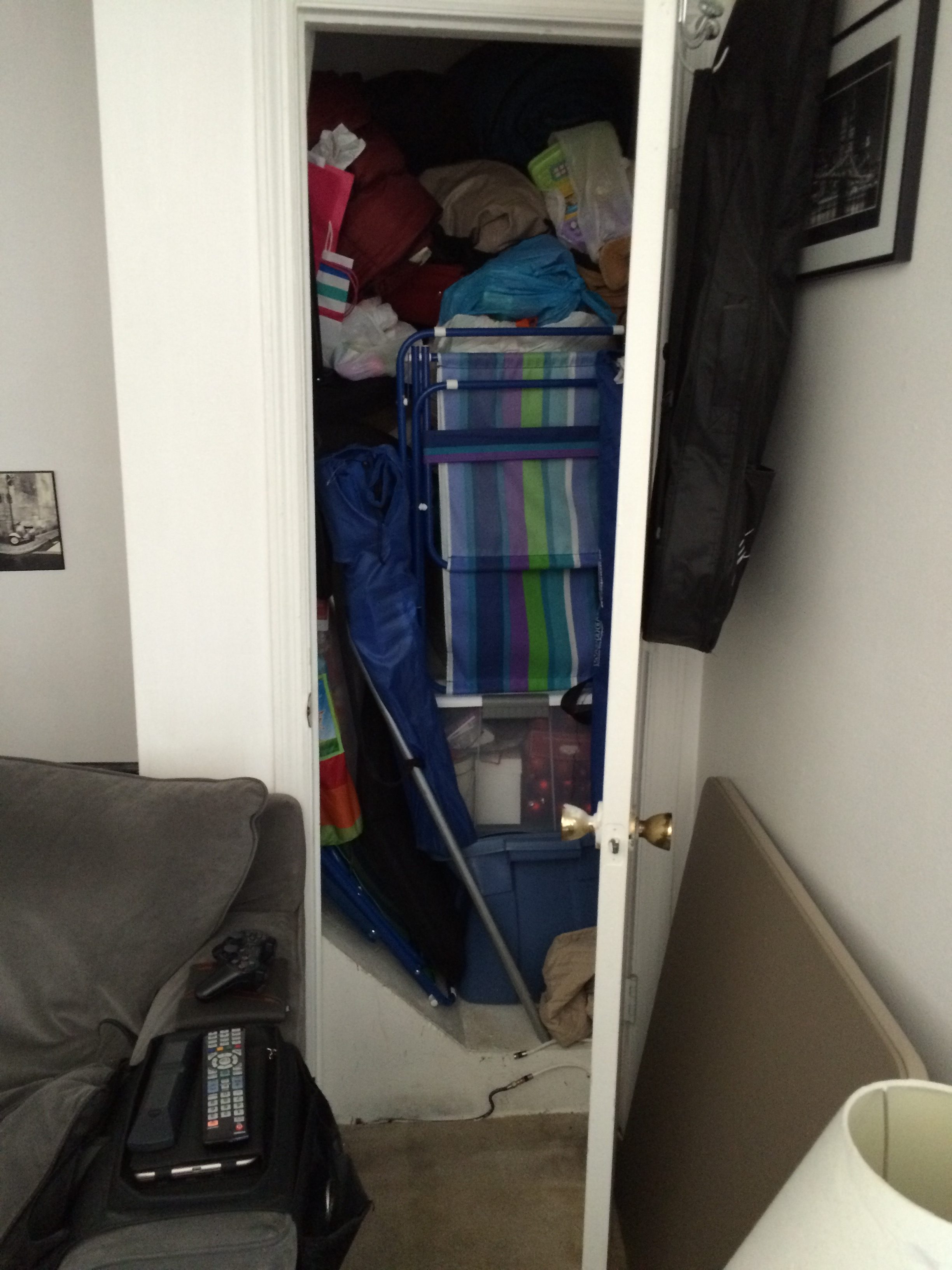 It has come to my attention that for many, determining the things that add value to their lives is not so strait forward. That many people are not fully aware of the full cost or value of the physical things they own even though they are paying the cost and/or enjoying the value every day. It is for this reason that I have put together a list of the seven types of physical clutter, and explain why they are clutter. My hope is that we can use this as a guide to help us minimize:
It has come to my attention that for many, determining the things that add value to their lives is not so strait forward. That many people are not fully aware of the full cost or value of the physical things they own even though they are paying the cost and/or enjoying the value every day. It is for this reason that I have put together a list of the seven types of physical clutter, and explain why they are clutter. My hope is that we can use this as a guide to help us minimize:
- Lazy Clutter – Let’s get this one out of the way first. This is just the stuff we don’t need, we don’t want, but it’s too big and too time consuming to get rid of. There is no mystery here, this is clutter in it’s truest form. Get rid of it! It’s dragging us down.
- Old Promises – This is that weight bench we used in our youth that we have been promising ourselves we’d start using again to get in shape. Only that promise started two years ago. And we are afraid to get rid of it because we somehow believe all hope of getting in shape would then be lost. Truth: We are holding on to that bench as a false hope that we will get in shape. In a sense, it’s the bench what is keeping us from getting there; because the hope of being in shape is just enough to satisfy so that we don’t have to actually do it. It’s a crutch. Use the bench or lose it. If in the future we actually DO want to work out, get in shape, then we will want to bad enough to purchase a gym membership or new exercise apparatus, and use it. The actual purchase of said service/item is a major part of the commitment of DOING the act, as opposed to PROMISING TO DO the act.
- Just In Case Supplies – Extension chords, duct tape, zip ties, and useful things of that variety. I suppose if these things don’t take a lot of space they are no big deal. Put them in a 2′ x 2′ crate in the back of the closet where they are not noticed (definitely keep first aid, fire extinguishers, and real emergency supplies easily accessible). But I once knew someone that kept a hand truck (dolly, whatever) in his linen closet because he said “You never know.” ……….Really dude….. really. Lose the “just in case” bulky items. In the rare event we need them, how hard or far can they be to acquire (rhetorical)? I know we can rent a hand truck from Home Depot, or U haul for pretty cheap.
- Collectibles – I admittedly don’t understand peoples obsession with having things just for the sake of having them. To me all the things we own function as a tool for health/survival or entertainment/stimulation of some kind. Its occurs to me that the need to collect exists only to satisfy some sort of insecure void people have; that collecting somehow makes people feel successful or superior in some way. I am no psychologist, so I cannot advise on how one could break a collecting habit, but maybe just being aware that it is a habit which stems from insecurity is a start.
- Keepsakes – Things we keep to remember the good times. These things are tied to memories. But are they really? Are the memories really not just a part of us? A few keepsakes are healthy, but too many can be considered “holding on to the past.” As if losing these items means losing a part of our self. This is an insecurity/fear of a different variety. Know this: Everything we were, are, and will be is all inside of us. Many memories will be forgotten, and that’s ok. Because the lessons we learned from those memories will be with us always. The residual affects of those memories remain. If we must have keepsakes, I suggest we take photos. They take up little to no space and they last longer than most trinket keepsakes. Not to mention they are an actual frozen moment in time, as opposed to an object that was present in the memory.
- Excess Decor – Having beautiful prints/paintings on our walls is a wonderful thing. I often gaze at the wonderful prints on my walls. Very often though, I have seen people with their walls covered with all kinds of prints, pictures, paintings, and even tapestries. Their walls are so cluttered, that one can’t tell what color paint is on the wall behind the decor. Here is the thing ………. a good looking home is not just about what we can see, but also about what we can not see. The true beauty of a good picture can easily go unnoticed if their is a lot of visual distraction all around it. i.e. All the beautiful pictures/prints/paintings are sucking the value out of each other, and in the end just appear like a jumbled mess on the wall. Most of the time the most beautifully decorated wall is one with a single breathtaking landscape print right in the center of the wall, and blank space all around it. This same principal can be applied to all decor, not just wall decor.
- Occasion Items – Things we keep because once or twice a year we have use for them. A single man has no need for lots of flatware or silverware during his usual day, but on Thanksgiving and Christmas every year a particular single man (we don’t need to give him a name) has his entire family over (4 generations) for dinner and merriment. So he keeps a substantial amount of flatware and silverware for these times. If he truly doesn’t mind the storage and cleanup. fine. He can continue on his merry way. But consider this, would it not make life easier and simpler to stock up on disposable silverware/flatware before these events and use them. No storage, no dirty dishes. It would be worth considering similar alternatives for other “Occasion Items” we all have.

